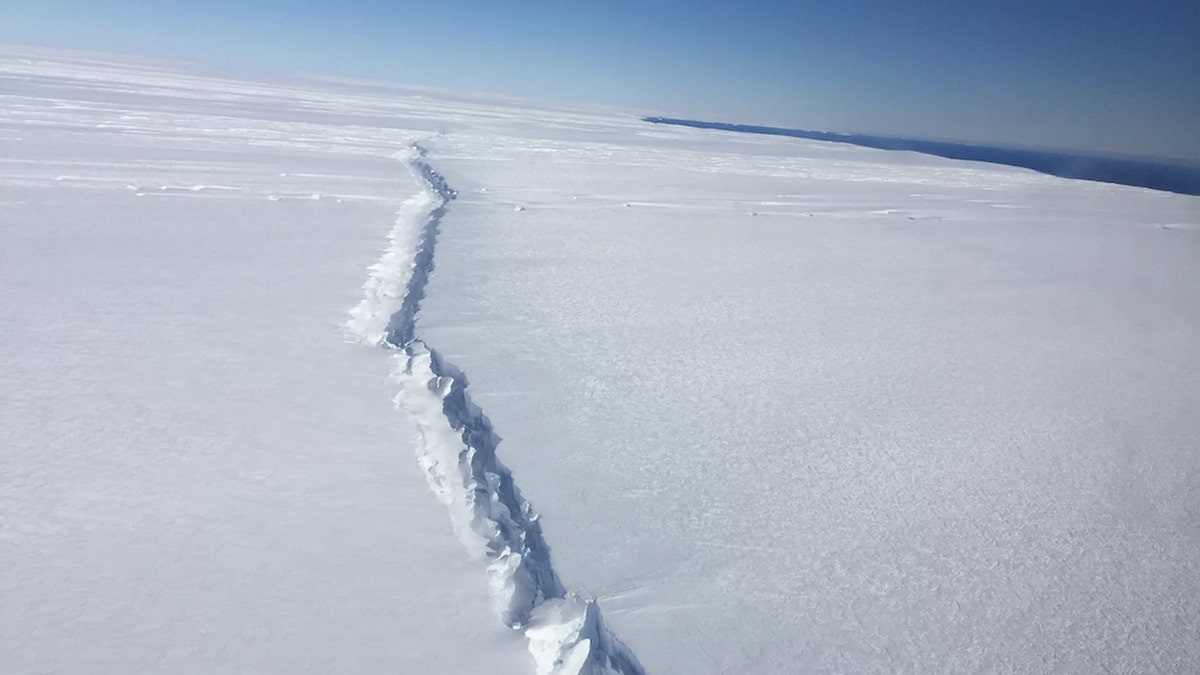
The A-68 iceberg separated from the Larsen C ice shelf in July 2017. Credit: Nathan Kurtz/NASA
Arctic lakes could release a vast reservoir of ancient carbon buried deep under the permanently frozen ground, or permafrost, thereby accelerating climate change.
These lakes, which form when surface ice melts and the ground beneath it collapses, could thaw underground permafrost much faster than scientists thought was possible, a new study reveals. [Images of Melt: Earth's Vanishing Ice]
Previously, scientists thought the bulk of this deep thawing of Arctic permafrost would likely not happen until after 2100.
Rapid changes in the Arctic
Climate change is taking hold in the Arctic faster than it is on the rest of the planet, and one of the biggest risks associated with warming temperatures in the region is permafrost melt.
The deep layers of permanently frozen soil that underlie much of the Arctic hide massive reservoirs of organic carbon, in the form of thousands of years' worth of trapped plant matter and even animal carcasses. As the soil gradually melts, these buried organisms will decay and release the greenhouse gases carbon dioxide and methane into the atmosphere, which can, in turn, lead to even more warming.
But most scientists believed it would take decades of warming to melt permafrost buried beneath the active layer of soil that freezes and thaws with the seasons.
"The conclusions that permafrost-carbon modelers were reaching was that, until you thaw really deep, we're not going to get this large, old carbon signal and that the really deep thaw of carbon on land is not going to happen until beyond 2100," study leader Katey Walter Anthony, an ecologist and biogeochemist at the University of Alaska Fairbanks, told Live Science. "What our study shows is that in a lake, you thaw that deep really fast on a scale of decades. Lakes tap into that old carbon much sooner, and they will release that permafrost carbon much sooner than that thaw on land."
Walter Anthony and her colleagues have been studying so-called thermokarst lakes, which are created when the ice-rich ground thaws, thus causing the earth underneath to collapse and form a pit, where the melted water pools. Thermokarst lakes often look like cookies that have been bitten around their edges, Walter Anthony explained, because the liquid water does indeed take bites out of the surrounding frozen margins, causing the lake to expand.
The lakes can also be up to 100 feet (30 meters) deep, and if the water doesn't freeze all the way to the bottom in the winter, the heat in the liquid water causes the permafrost beneath that lake to thaw, Walter Anthony said.
"As that permafrost thaws, we get what we call a thaw bulb, and that thaw bulb can deepen and expand laterally," Walter Anthony said. When that happens, "what was previously frozen soil with organic carbon in it becomes thawed, and that thawed soil releases this organic matter to microbes that decompose it and make carbon dioxide and methane."
The researchers wanted to quantify just how much methane —the major component of the gas bubbling up from the lakes —thermokarst lakes are emitting today and what their projected emissions are for the future. The team used a combination of computer models and measurements taken from fieldwork in Alaska, Canada and Siberia to map the growth and emissions of thermokarst lakes.
According to their results, published Aug. 15 in the journal Nature Communications, the lakes would double previous estimates of permafrost-caused greenhouse warming.
"It's still a lot smaller than fossil fuel emissions, but it's about equivalent to land-use change," which is the second-biggest source of human-caused climate change, Walter Anthony told Live Science.
Original article on Live Science




















